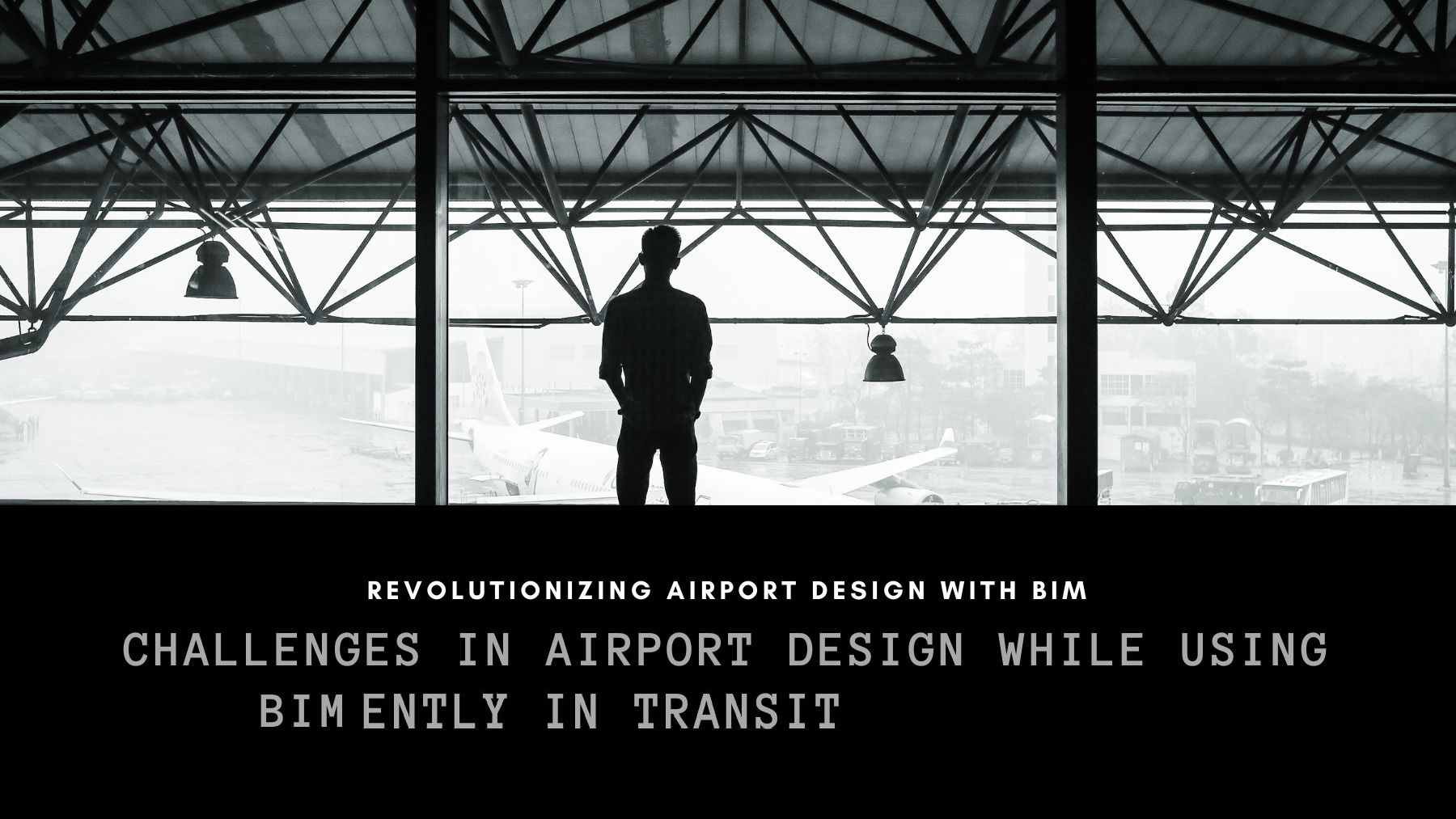The constantly evolving AEC sector has reached a whole new height with the introduction of Building Information Modeling, or BIM. The lifelike designs and 3D and 4D models, along with its ability to smoothly incorporate frequent alterations in the design, make BIM the perfect tool for the industry. The realistic visualization and simulation allow architects and engineers to anticipate the final view in the initial phases so that any defect or clash can be resolved beforehand, thereby reducing the cost and effort of rework.
How BIM assists in Airport Design
BIM’s unique and reliable abilities have helped AEC professionals in countless large scale construction projects in recent years, including airport design. Airports, being a multi-faceted system, have various complex functional and operational units working in sync with each other. The accurate 3D models and visualizations of BIM enable stakeholders to foresee every nook and cranny of the ultimate finished project in the pre-construction stages. With the help of these designs and simulations, engineers and architects can detect any potential clashes very early on in the project and make necessary amendments without disturbing the model’s other components. More precision in the initial phases means fewer on-the-ground errors and a faster project completion.
BIM also streamlines renovation and maintenance projects to a great extent. Virtual 3D simulations make it easy for AEC professionals to make required changes in the existing establishment without disrupting its ongoing activities.
Challenges associated with BIM in Airport Design
BIM has been able to firmly secure its place in the construction industry in the last decade or so, however, the same cannot be said for other mega-projects. A number of cultural and technical factors prevent BIM from achieving its true potential in large-scale infrastructure projects. The chief reasons behind the lag in BIM implementation are as follows:
- Complexity of large-scale designs – An airport is composed of various fragmented infrastructural units like terminals, runways, parking areas, BHS, traffic controllers, etc., which need a lot of space and time to build. Designing and building such large establishments require a lot of information management and 3D visualization and virtual testing, which many a time becomes cumbersome if one does not have the essential knowledge.
Additionally, an airport’s MEP system includes various structural and functional components that need to be in sync, such as the HVAC system, electrical wiring and cabling, plumbing, etc. Creating such interlinked mechanisms require a great deal of coordination between various stakeholders involved therein. At present, quite a lot of engineers are not well-versed in Building Information Modeling, and, hence, are hesitant towards adopting it. This poses a barrier to the proper execution of BIM.
- Insufficient managerial support and lack of coordination – Due to their limited knowledge of BIM, project managers and other stakeholders usually oppose the idea of using it in large-scale projects. Many organizations still use BIM as a designing and drafting tool in construction, which barely scratches the surface of its capabilities. This lack of awareness among the upper management staff leads to inadequate support for BIM enthusiasts and creates disharmony within the team.
Furthermore, BIM is a collaborative tool, which means it allows all the project participants to build and amend a model at the same time. In fact, interoperability is the key strength of BIM, which makes it the most effective tool in construction. However, in a large-scale project, this can very easily become a cause of conflict among the team members.
- Shortage of skilled BIM experts – Multifaceted mass projects like airport design, being very intricate in nature, require seasoned BIM specialists and engineers who are conversant with the technology and its applications. There is a deficiency of research and development in the industry, because of which, despite the continuous use of BIM in various building and construction projects, project leaders are still far from unfolding its true potential. This could be due to a number of reasons, but the main cause of such unawareness is a lack of adequate knowledge of the tool.
Also, the upper management staff in most construction companies continue to think of BIM as a customary designing and drafting tool, thereby completely undermining its range in the industry. Due to this fallacy, they prefer to use their usual designing tools, like CAD, which they have been familiar with for a long time.
- Additional cost of operation – The high investment in the initial set-up is another reason behind AEC professionals’ reluctance to move into a fully-fledged BIM-based work environment. Working with BIM requires quite a few extra hardware and gadgets, along with the BIM software and other tools. In addition to this, the team members and experts have to be trained beforehand in order to ensure a smooth modus operandi. This entails more expenditure on infrastructure and training, along with additional time and effort on the team’s part.
Moreover, it is very difficult to determine or measure the total benefits offered by BIM, which is why project managers are still unsure whether the investment is worth the results.
Conclusion
Airport designing is a complex and multi-layered project, which will highly benefit with the introduction of digital transformative tools like BIM. The realistic designs, collaborative environment, optimized working methodology, and improved information management will not only expedite the construction process but also present the most concrete end results. By using proper strategy and taking the right guidance from qualified BIM experts, project managers and construction companies can make a safe move towards this transformation.


